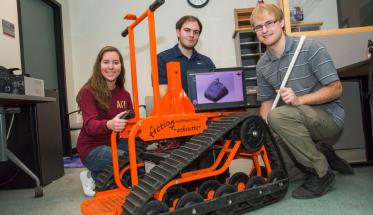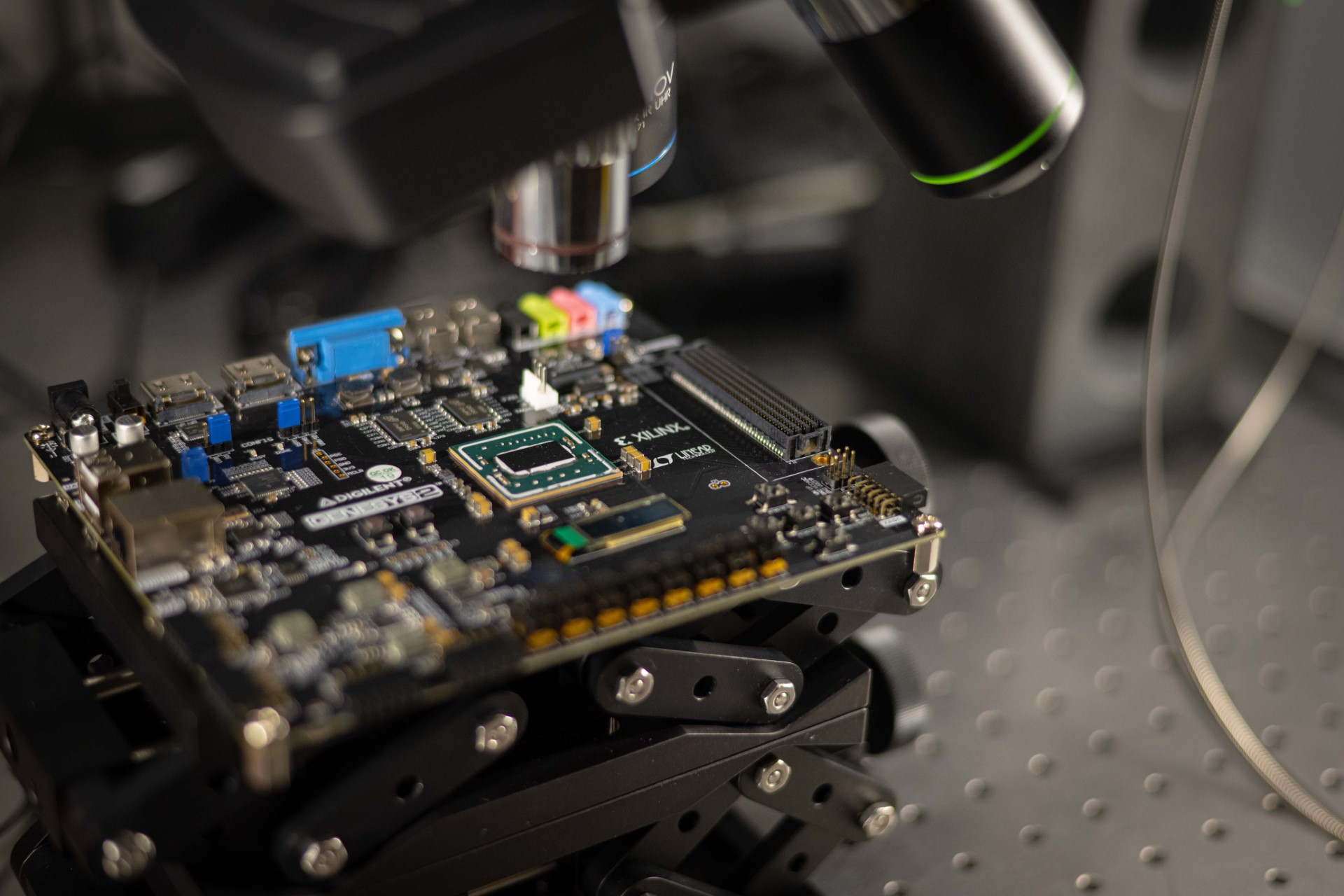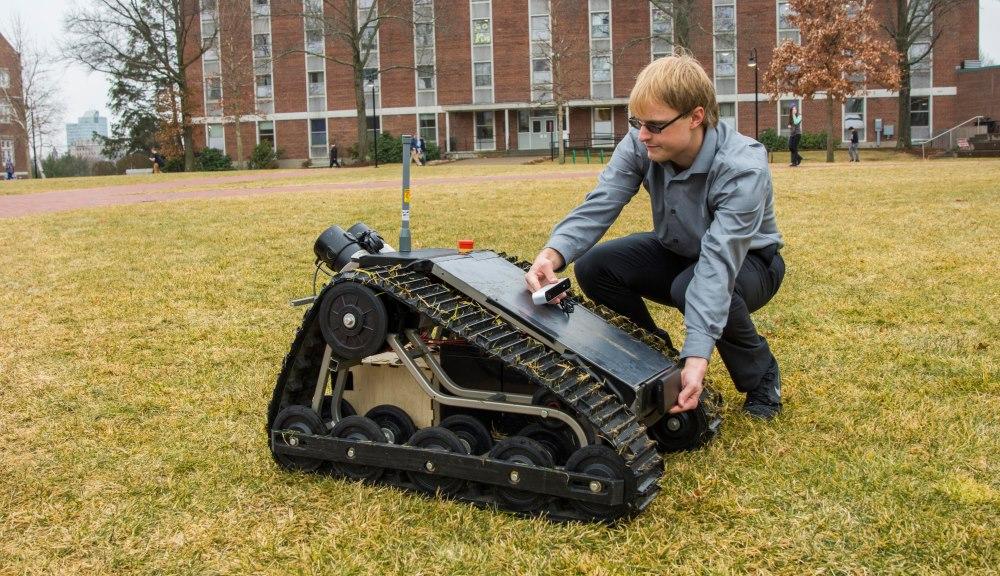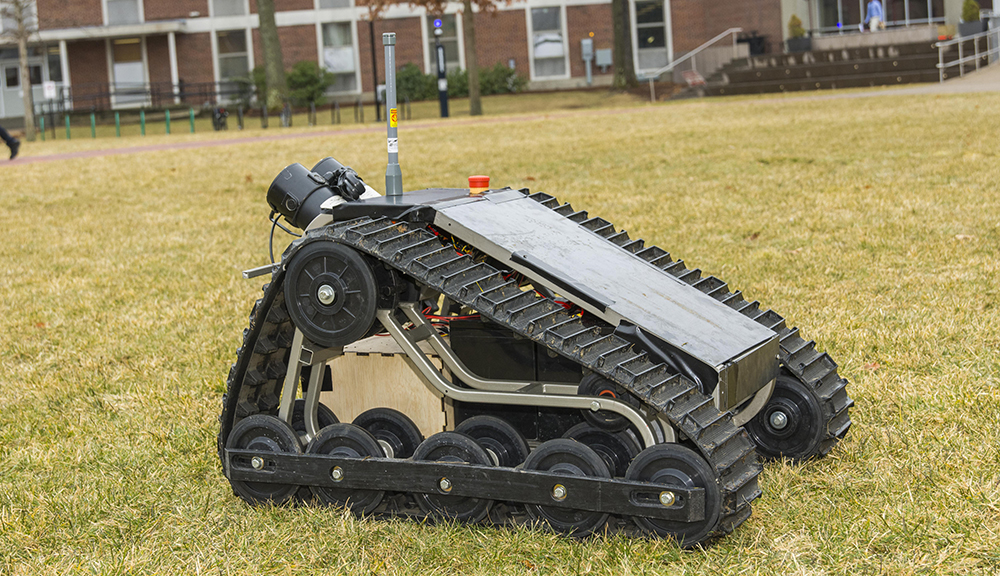To achieve these goals, the WPI team is building algorithms for autonomy, machine learning–based vision processing, and navigation, while also fabricating a sensor suite, a base charging station, and a communication network. The team has installed sensors and cameras, has set up a controller, and has been working on teleoperation controls. The students are expected to demonstrate their security robot this spring at Wright-Patterson Air Force Base near Dayton, Ohio.
The WPI team taking on the challenge consists of seniors Marissa Bennett, who is pursuing a major in robotics engineering and a minor in computer science; Ken Quartuccio, a robotics engineering major; and Jeff Tolbert, who is double-majoring in robotics engineering and electrical and computer engineering. The students are participating in the challenge as their Major Qualifying Project, MQP, a team-based, professional-level design and research experience that all WPI undergraduates must complete.
Kenneth Stafford, a teaching professor and director of the university’s Robotics Resource Center, and Alexander Wyglinski, an associate professor of electrical and computer engineering, are advisors for the project.
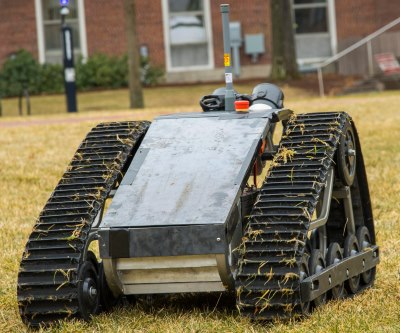
The robot is designed to move quickly and
autonomously to investigate possible intrusions on
unmanned military bases
Bennett said one of the challenges the team is facing is how to keep the robot moving at its top speed, given the added weight of the sensors and cameras and the extra power those componts will consume. The most significant challenge may be equipping the robot to work in a wide range of temperatures and environments.
“The robot itself has to be thermally equipped to maintain a lot of different electronics onboard,” she explained. “It needs to keep them at a stable operating temperature, whether it’s below zero or in extreme heat, so the robot can function no matter where it is. For instance, we’re coming up with a way for the robot to cool itself by pushing air through itself as it’s moving.”
Gilland added he is hopeful the WPI team will find innovative ways to make the robot see, sense its surroundings, maneuver, and guide itself. He’s even eager to see how they will make sure the robot simply does not tip over in difficult terrain. “The part that will be useful for us is to see which algorithms work better than what the Air Force has been working on,” he said.
Action Trackchair Inc., a Minnesota-based company that builds all-terrain mobility chairs, provided a trackchair for the students to use in the challenge. The device is designed to move over dirt, grass, and snow, as well as through water.
